#A.B. Archie
Text

Set from A.B. Archie with the Kera-303 Boots in Black from Demonia ($112.95)
#Becky Lynch#Rebecca Quin#A.B. Archie#Kera-303 Boots#boot#boots#black#Demonia#women of wrestling fashion#wwe
9 notes
·
View notes
Text
Here are some lyrics about Jan 26 and all it represents, to remind you why we hate it:
"How you wanna raise a flag with a rifle to make us want to celebrate anything but survival?" (From Jan 26 by A.B. Original)
"Why you crying for if it's just only a date? It's a date where all my women got beaten and raped." (From 22 Clan by Mackridge x Barkaa)
"Well, they say that they came in peace, but our blood still stains the beach." (From Bagi-la-m bargan by Birdz)
"Fuck celebrating days made on misery. White Aus still got the black history." (From Jan 26 by A.B. Original)
"Can't colonise my blak mind, I'm from the Dreamtime, I go back. The committed genocide through my tracks, they raped our mothers lessened my black. They brought the violence when they attacked." (From Blak Matriarchy by Barkaa)
"One dark day on Framingham, came and didn't give a damn. My mother cried go get their dad. He came running, fighting mad. Mothers tears were falling down, Dad shaped up and stood his ground. He said "you touch my kids, and you fight me." And they took us from our family. Took us away. They took us away. Snatched from our mothers Brest, said this was for the best, took us away." (From Took the Children Away by Archie Roach)
"Patiently waiting for someone I ain't ever seen before. They say he's the captain of men but don't believe in our law. From the land of the white skin, he's self riteous, a murder without license." (From Bagi-la-m Bargan by Birdz)
If you can listen to all of these songs with an honest and open mind, and you still don't get it, then I'm sorry, but I don't think you've got a functioning heart.
9 notes
·
View notes
Text
David Grundy | A Black Arts Poetry Machine
(Bloomsbury)
The Umbra Poets Workshop was formed in the early 1960s in the atmosphere of artistic and political radicalism that saw African-American protestors disrupt the business-as-usual order of the UN building in New York in protest at the murder of Patrice Lumumba. One of the participating groups, the On Guard Committee for Freedom -- a political organisation -- essentially then coalesced into a more artistically-focused group, the Umbra Workshop. The group held regular meetings at Tom Dent's flat, in which they would get together to discuss each other's in-progress work, and were an active presence in the New York poetry scene of the time. Consisting of a fluctuating, but always large, membership, they aimed to form a publication, workshop and reading environment at a time when the poetry scenes around them were almost exclusively white. The group also started a magazine, of which two issues were produced during its most active period, with further issues appearing at periodic intervals later on, after the group had officially disbanded.
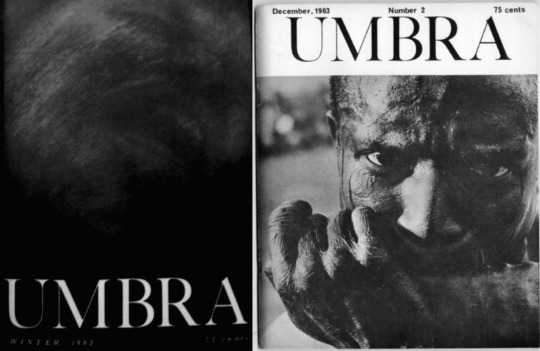
Copies of the magazine are rarer than hen's teeth these days -- there was talk of an Umbra reader coming out from CUNY's Lost and Found programme, but I haven't seen or heard any news of that for a while. Let's hope that something happens! But Umbra was always more than just a magazine. Calvin Hernton described the explosive impact Umbra Poets would make at readings within the predominantly white New York poetry scene of the time: sometimes appearing eight-to-ten at a time, they appeared, in his words, like "a dynamic, well-rehearsed black arts poetry machine". So while Baraka has often been essentially credited with 'founding' the Black Arts Movement, establishing the Black Arts Repertory Theatre/School in Harlem after Malcolm X's death in 1965 -- an enterprise in which members of Umbra were involved -- Umbra should be understood as laying the ground -- and, perhaps, offering examples of roads not taken. Umbra are sometimes credited in histories of the period as precursors, but their work is almost never considered in depth. Hence this book! (I'm also played to say that another book, by Jean-Phillipe Marcoux, is in the works -- watch this space...)
Of course, the Black Arts Movement challenged easy divisions between the political and the aesthetic, and politics was also key to Umbra. The book's first chapter discusses the 1961 UN protest and the emergence of Umbra, along the way offering readings of poems that emerged from the protest and its environment by Ishmael Reed, Raymond R. Patterson, Askia Toure, Ray Durem and Lorenzo Thomas. Here's one of them:

I use this chapter to argue that, at this point in time, tradition of African-American internationalism was already in existence -- involving Baraka, to be sure, but alongside many other now-forgotten figures, not least the Umbra poets. Umbra itself was short-lived, but it set in motion a number of hugely important careers -- to list them partially, beginning with perhaps the most famous, that of Ishmael Reed, but also of Lorenzo Thomas -- later on, a Black Arts scholar,and throughout, for my money, one of the most unjustifiably-neglected poets in America of the second-half of the Twentieth Century (though thankfully a collected poems is forthcoming -- this is a bit of a boom-time for Umbra, it seems!); and of Tom Dent, 'New Orleans Griot' (likewise, an invaluable Dent Reader came out last year -- edited by Dent's friend and comrade Kalamu ya Salaam, you can get it here); of David Henderson, maybe best known as the first biographer of Jimi Hendrix, collaborator with Sun Ra, Ornette Coleman and others, poet of what he calls the 'third eye/world' of diasporic culture in America; of Calvin C. Hernton, author of the controversial Sex and Racism in America, attendee of R.D. Laing's Kingsley Hall and meetings of the Caribbean Artists Movement, novelist and poet; of N.H. Pritchard, whose experimental concrete poetry has recently been addressed by Fred Moten and in Anthony Reed's Freedom Time; Lloyd Addison, perhaps the most experimental of the Umbra poets, author of prodiguous, often self-published output, allusive, punning and singular; Askia Toure (then Rolland Snellings), today one of the eminent grises of the Black Arts Movement; Rashidah Ismaili, whose Autobiography of the Lower East Side has been getting some recent praise, and who should (as is the case with all these writers) be far better-known; Steve Cannon, still an active figure in New York artistic scenes; did I mention that Archie Shepp and Cecil Taylor were also involved?! -- and all that's just the half of it...
Within a single book, I wasn't able to write on every member of the workshop, so, after the ensemble first chapter on the Lumumba Protest, each subsequent chapter focuses on one principal writer. Though Amiri Baraka was never a member of the workshop, he knew a number of the Umbra poets and invited them to perform in the Black Arts Repertory Theatre / School. (Here's Clayton Riley's review of the event for Liberator, alongside some images from the feature on 'five young afro-american poets' in French left magazine Revolution, which sets Baraka alongside Umbra poets Lorenzo Thomas and Joe Johnson, as well as A.B. Spellman and a very young Sonia Sanchez.)
While Baraka's Black Arts work is too often taken in isolation, as if suddenly it emerged in an explosion of provocative militancy, setting it against the backdrop of Umbra helps us -- I hope! -- read it anew. So the book's second chapter turns to Baraka's response to urban insurrection and stereotypes of African-American militancy in the iconic mid-60s poems 'Black Dada Nihilismus', 'Black Art' and 'Black People!'.

The third chapter concentrates on David Henderson's poetry, charting the complexities of New York racial politics at the time -- as he writes, 'Harlem to Lower East Side, space of a nation' -- and in particular the 1964 Harlem Rebellion, from which emerged his poem 'Keep on Pushing'. We then get Calvin C. Hernton's writings on riots, in poetry and in an incendiary essay 'Dynamite Growing Out of their Skulls!', published in Baraka's and Larry Neal's anthology Black Fire; and another Hernton chapter, on his poem 'Medicine Man', read for its complex and tortured address to the American South.
Next up, a chapter on Tom Dent, which touches on his work with The Free Southern Theatre, who courageously toured the South, eventually settling in New Orleans, and thence his own poetry emerging from the city -- notably, the long poem 'Return to English Turn'. Finally, there's a chapter on Lorenzo Thomas's poem 'The Bathers', one of the great poems of the Black Arts Movement, and its (re)writing of the 1963 protests in Birmingham, Alabama. (I also touch here on Ishmael Reed's amazing early prose-poem 'The Ghost in Birmingham' -- subsequently the first item in his collected poems, it appeared in the magazine Liberator in the early 60s and is as good an indication as any of just how the good the writing coming out of Umbra could be.)
taken from here: STREAMS OF EXPRESSION
19 notes
·
View notes
Text
V.A.: Impulse Records – Music, Message And The Moment (4LP) (14.05.2021) [SALE]
V.A.: Impulse Records – Music, Message And The Moment (4LP) (14.05.2021) [SALE]
Zur Feier des 60-jährigen Bestehens von Impulse Records. Ein 4LP-Boxset mit Tracks von John Coltrane, Quincy Jones, Charles Mingus, Oliver Nelson, Pharoah Sanders, Archie Shepp und anderen legendären Impulse Künstlern. Diese Veröffentlichung enthält Linernotes von Greg Tate und A.B. Spellman.
Orange und Schwarz. Feuer und Ebenholz. Wut und Stolz. Impulse! Records trug seine typischen Farben mit…

View On WordPress
0 notes
Text
Cormach Evans and Coco Eke On Aboriginal Excellence, Pandemic Parenting And Their No Dickheads Policy
Cormach Evans and Coco Eke On Aboriginal Excellence, Pandemic Parenting And Their No Dickheads Policy
Family
Ashe Davenport
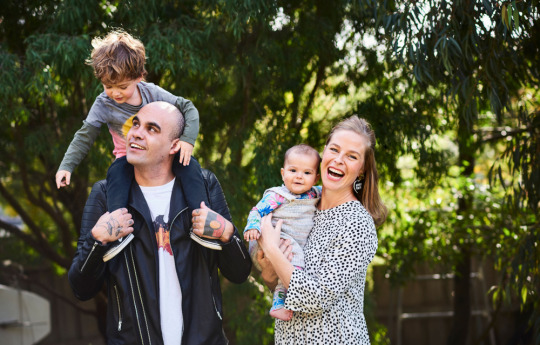
Introducing Cormach, Waari (2.5), Coco and Winnie, who was born six months ago at the beginning of the pandemic. Photo – Nikole Ramsay.
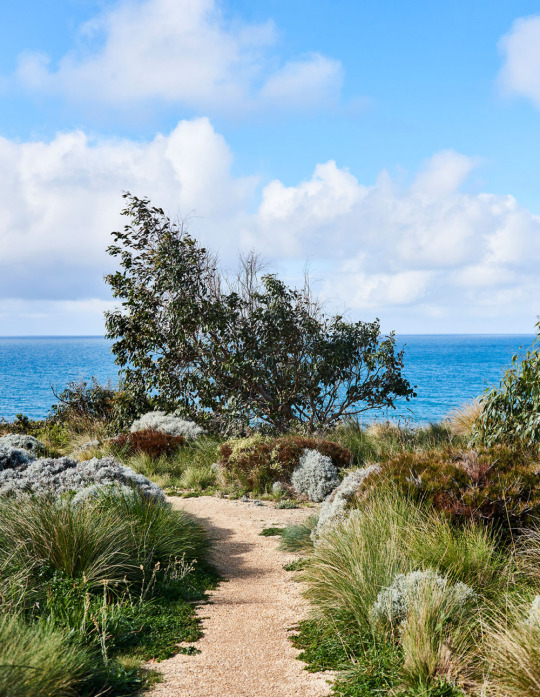
The young family live on the cliffs of Jan Juc. Photo – Nikole Ramsay.
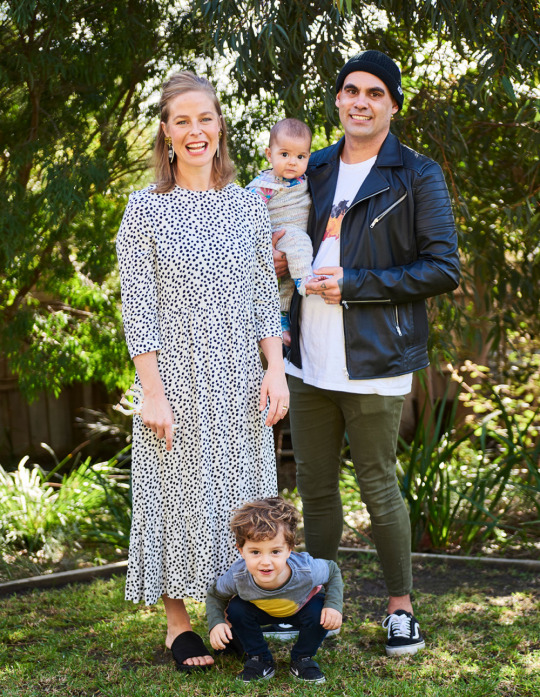
Coco and Cormach met at a music festival and now run two organisations: Strong Brother, Strong Sister, mentoring Aboriginal and Torres Strait Islander youth and a not-for-profit registered charity, Ngarrimili, helping First Nations businesses thrive. Photo – Nikole Ramsay.
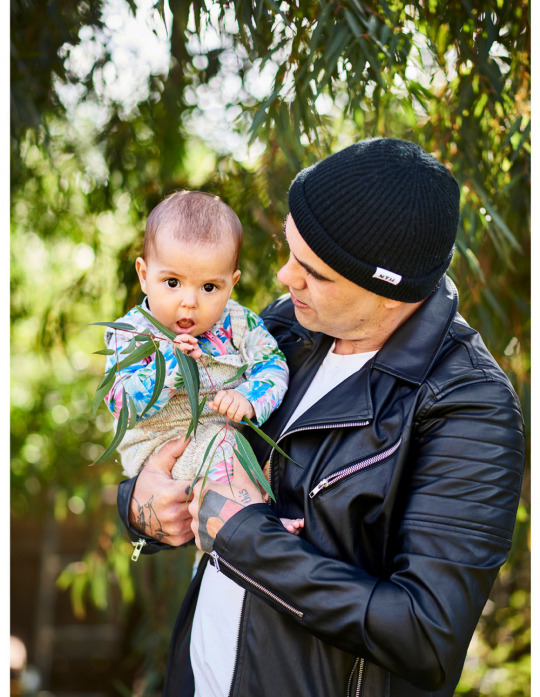
Cormach with six-month-old Winnie. Photo – Nikole Ramsay.
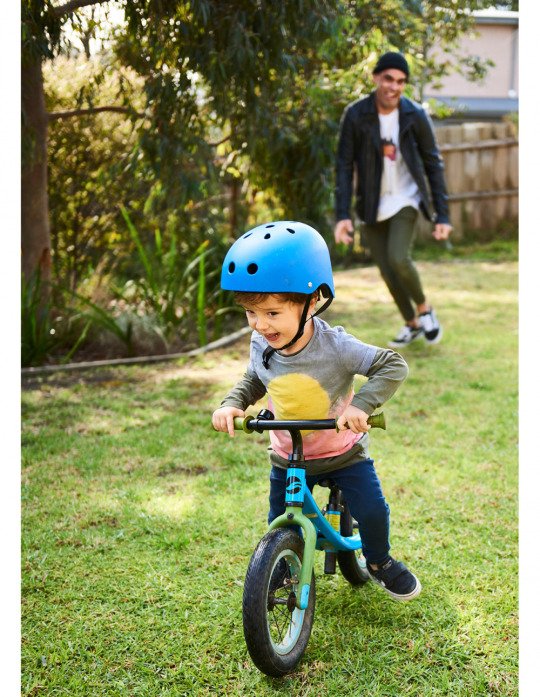
‘Waari was exposed to racism for the first time at 12 months old, which just blew me away, but also thinking about the anger I felt from that moment,’ says Cormach. ‘I want to ensure that never happens again.’Photo – Nikole Ramsay.
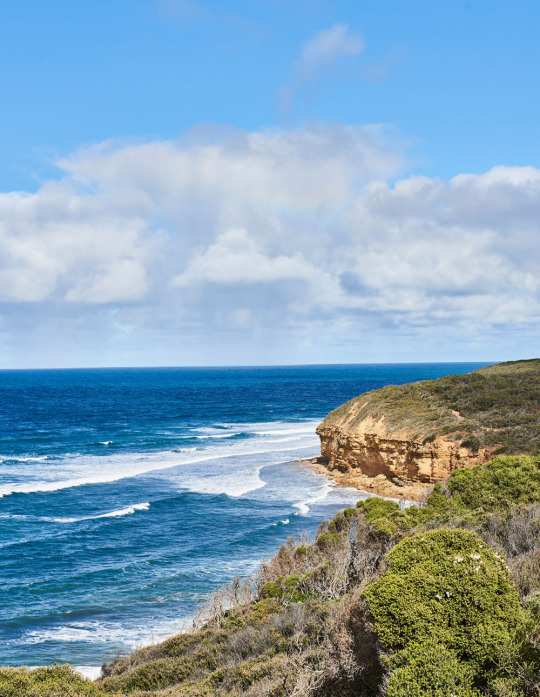
The beautiful coastline nearby the family’s home. Photo – Nikole Ramsay.
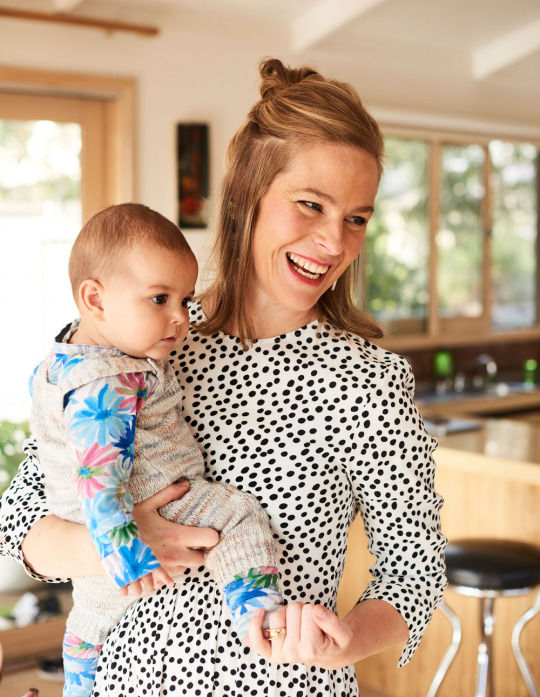
Coco credits her mum, Mary, for her strength. Photo – Nikole Ramsay.
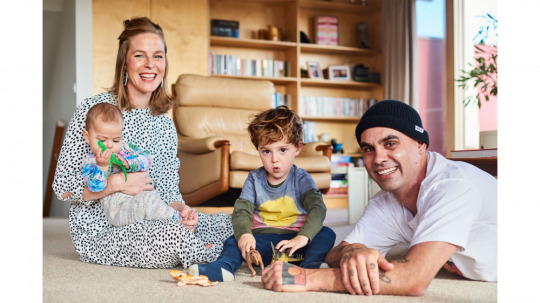
Coco, Winnie, Waari and Cormach in their beautiful Jan Juc home. Photo – Nikole Ramsay.
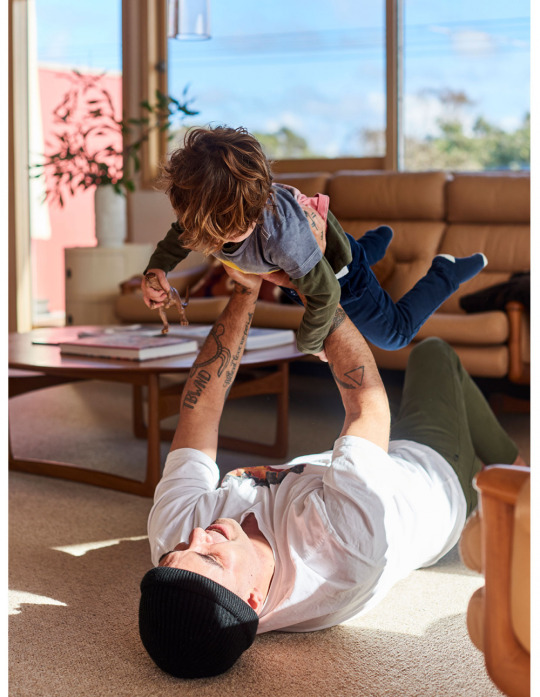
‘My job is to protect our kids and community from dickheads, and to shield them enough so they can find their voice,’ says Cormach. Photo – Nikole Ramsay.

Hello Winnie! Photo – Nikole Ramsay.
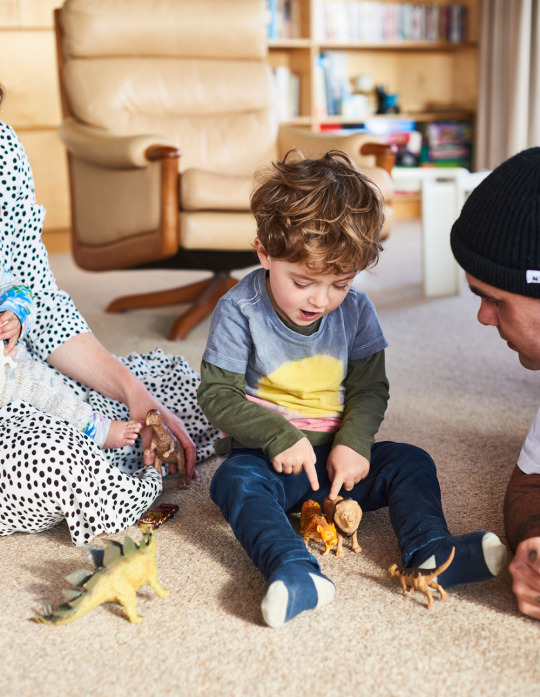
Waari at home with Coco, Cormach and Winnie. Photo – Nikole Ramsay.
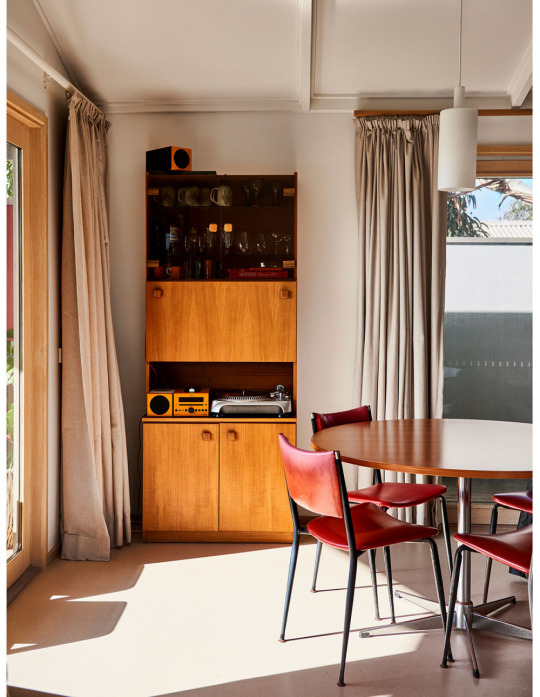
‘My brother-in-law Tim Birnie (from Tim Birnie Design Studio in Jan Juc) designed our renovation a couple of years ago. We wanted to keep the original beach house feel with a few modern improvements, while keeping its original character. It kind of feels like we are on holiday in our own home,’ says Coco. Photo – Nikole Ramsay.
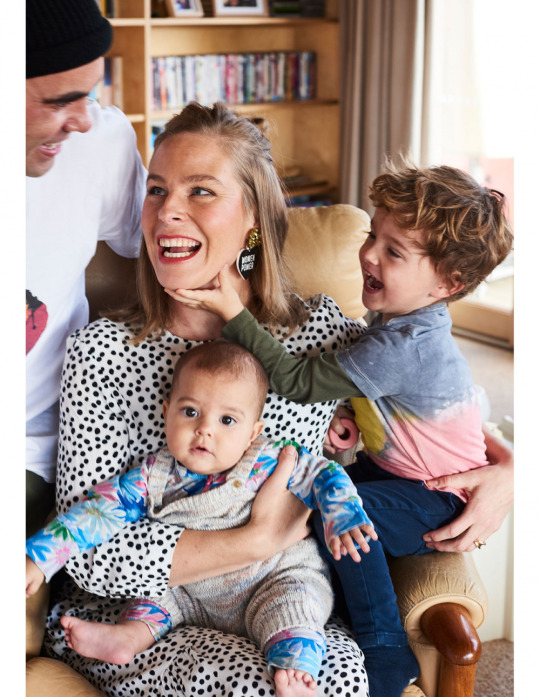
This pandemic bubble is filled with so much love. Photo – Nikole Ramsay.

‘I don’t see myself as an activist, I see myself as a proud Yorta Yorta man,’ says Cormac. ‘I don’t think I have to be an activist just because I’m Aboriginal. Standing up for what I believe in shouldn’t make me an activist.’ Photo – Nikole Ramsay.

‘People think of us as being strong and capable, so we shouldn’t be having a hard time,’ says Coco of the difficulties of parenting. ‘I think that’s where it becomes a bit taboo. You feel like you can’t talk to anyone about it.’ Photo – Nikole Ramsay.
Cormach and Coco don’t describe themselves as activists. I got the feeling that fighting for what they believe in is a way of life for them, as essential and automatic as breathing air. Cormach, a Yorta Yorta man, and Coco, a non-Aboriginal woman are passionate nurturers of Aboriginal excellence.
They’re parents to Waari (2.5) and Winnie (six months), who was born at the beginning of the pandemic. They’re happy and very, very tired. Waves of tender exhaustion ripple through my screen during our Zoom call.
Cormach founded Strong Brother, Strong Sister, and he and Coco co-founded Ngarrimili. Coco is also the label manager at Bad Apples Music. To say they’re unafraid of a challenge is an understatement. When Coco was six months pregnant with Waari, Cormach embarked on a 200km open ocean paddle to raise money for Indigenous men’s health. Things didn’t exactly go to plan. He dislocated his shoulder and was unable to finish. The feeling of failure almost broke him, but he doesn’t see it that way now. Money was raised, connections were made and organisations that could help people flourished.
I love that story. It seems very them. Taking on impossible oceans, falling apart and helping to put each other back together.
This is an edited version of our chat.
How would you describe 2020 in three words or less?
Cormach: Optimistic, loving, heartfelt
Coco: Fortunate, home, babies
And you guys are doing it with a toddler and a newborn! How is the transition going from one kid to two?
Coco: It is trickier than I thought. I hadn’t fully grasped that two is so much more complex than one, although COVID has meant there has been little reason to leave our house, it is hard. We took our oldest, Waari, with us everywhere – a sold out show at Canberra Theatre at six weeks old, Barunga Festival in the NT at 6 months, and he had his first birthday on tour with Birdz between Argentina and Brazil. Little Winnie has been to Jan Juc beach, Jan Juc park, and Torquay shops. I’ve taken the year off running Bad Apples, which has been a weird transition for me, but being at home with both of them has been really special, and I’m glad I made the decision.
Cormach: It’s truly been an incredibly beautiful journey, but I’ve noticed there are taboo areas of parenting, which I’ve found extremely strange. At times, it’s been difficult to manage general life – work, exercise, self-care, friends, family and just managing family time, all on very little sleep. It’s rare to hear people talk about the challenges and hurdles of parenting, which is something that needs to change to ensure people know that it’s normal to find times tough. It’s ok not to be ok.
Totally. I wish I’d asked for help when I was having a hard time parenting.
Coco: And for there be no shame around it. Cormach is a significant presence within his community, so for us to say it’s hard, is hard. People think of us as being strong and capable, so we shouldn’t be having a hard time. I think that’s where it becomes a bit taboo. You feel like you can’t talk to anyone about it.
Cormach: Words cannot explain how incredibly lucky I am to have Coco as a partner, Coco has been the Matriarch of the family always providing deep support, love, compassion and incredible guidance through this whole journey not only for me but our kids too. She puts all her energy into ensuring Waari, Winnie and I are full of wonderful energy and pure happiness. Coco is an incredible mother, when I find myself lost she’s got the answers, she’s got the strength.
Where does that strength come from, Coco?
Probably my Mum…
(Her voice broke here and she and Cormach smiled at each other. She cried a little through the next bit. Cormach took Winnie out of her arms and rubbed her back with his free hand. It was a very tender moment, which they’ve given me permission to share).
I think I derive a lot of my energy from her. She brought up four kids. She’s incredible. The word ‘workhorse’ isn’t right. She’s a fighter who stands up for the underdog. She’s logical about things, and she’s instilled that in us kids, even when I haven’t slept and things feel out of control, I can find that logical mind. We can both fall to pieces at different times, and somehow I’ll find the answer. I just tap into mum, the Mary in me.
How did you guys meet?
Coco: At a small music festival in Grovedale, I was managing the rappers A.B. Original who were headlining, and Cormach was fundraising for his paddle. He came backstage and I took a photo of him with Briggs and Trials. Then I asked Briggs to take one of me and Cormach. I think I stuttered when I asked him… mortifying! But well worth it.
Cormach:As Coco mentioned I was at a music festival, and got invited backstage to meet the boys. Coco was there and I went all shy when she asked for a photo, I thought Coco was incredibly beautiful and just had this instant attraction.
Do you still have the photo?
Coco: It’s on the fridge!
What sealed the deal?
Coco: I admire Cormach – his passion and optimism, he’s a babe and an incredibly good father, friend and partner. My deal was sealed from the get-go. Technically, a cheeky kiss at Meredith Music Festival was the deal sealer!
Cormach: Coco has an energy that is contagious, from that first interaction to now, every day she brings me pure joy, energy, love and so much more. For me, the first “date” in Melbourne I think I tried to steal a kiss a few times but couldn’t build the courage to. Meredith Music Festival was where it really kicked off.
What led you to work in activism?
Cormach: I don’t see myself as an activist, I see myself as a proud Yorta Yorta man. I don’t think I have to be an activist just because I’m Aboriginal. Standing up for what I believe in shouldn’t make me an activist.
Coco: I think you’re an advocate – you advocate for the young people in your community and for Aboriginal and Torres Strait Islander business owners and founders. You’re staunch about it too – if you see injustice or kids not getting the best opportunities, you fight for them.
Cormach: It’s a huge responsibility to be an activist and to actually identify as an activist. I can’t speak on behalf of all Aboriginal people. I’m one man with a passion to ensure voices are heard and respected, which we do with Strong Brother Strong Sister and Ngarrimili. We drive community voices to be heard rather than driving our own agenda. There are hundreds of different Aboriginal countries and languages across Australia. If I was to say I was an activist, it would be insensitive and disrespectful. I don’t want to position myself as somebody who can act on everybody’s behalf. Aboriginal experiences are so varied. There are different journeys and different traumas as well. It’s definitely worth mentioning the work of people like Aunty Carolyn Briggs, Uncle Archie Roach and Uncle Paul Briggs have done, to allow me to stand on their shoulders, proud and tall.
People want to put you in a box, I imagine, like how I just did. But that’s a good reminder. You’re doing something you believe in, and maybe other people can too.
Cormach: Or just, don’t be a dickhead, which is the simpler version. There are plenty of them out there, unfortunately. My job is to protect our kids and community from dickheads, and to shield them enough so they can find their voice.
What story do you hope your kids will tell about being Aboriginal?
Cormach: All I hope for is that they won’t have to worry about racism and discrimination. Waari was exposed to racism for the first time at 12 months old, which just blew me away, but also thinking about the anger I felt from that moment. I want to ensure that never happens again.
They have their own journeys to explore and grow from and we will support them in any decision they make.
What breaks your heart?
Coco: Lies. Systemic racism and injustice. The active silencing of the oldest, living, continuous cultures in the world. The Stolen Generation. The incarceration of children, the increase of domestic violence during COVID lockdowns, homelessness, this country’s immigration policies.
Cormach: Seeing people hurting, seeing kids and community members facing racism and discrimination still today, seeing injustice for our people. A key example is the fact that there have been 438 Aboriginal deaths in custody since the Royal Commission back in 1991 and no charges have ever been made, no accountability, seeing Aboriginal people die 10-20 years younger than non-Aboriginal people, children being removed from their mothers, fathers, brothers, sisters, their families, communities and their culture. The impact COVID is having on people’s emotional health and wellbeing.
What truly breaks my heart is that Australia talks about how it’s so rich in multiculturalism, yet it can’t even acknowledge nor respect the First People of this land.
What mends your heart?
Coco: Compassion, family and music
Cormach: What mends it for me personally is family, culture, music, surfing and work. How we can mend it as a collective is to stop, listen, hear what’s being said, and step back.
Family Favourites
Typical Sunday?
Cormach: Sundays are usually a sleep in for one of us while the other gets the kids up and ready for the day. We live on the coast so the weather sets out the plan for the day. Coffee is always first (of course) from our favourite two places; Swell Café (Jan Juc) or the Salty Dog Café (Torquay). Waari has this intense and beautiful obsession at the moment for puddles, water and mud so we usually go check the surf and Waari jumps in puddles until they’re completely dry. Followed by a walk and bike ride to the park, where Waari shreds on the BMX track making sure he goes over every… single… jump. If the surf’s good I’ll go surfing, there’s a few naps for the kids and take away from Pholklore or Roku Den for dinner.
Go-to album?
Coco: Depends on my mood, but on high rotation is: ‘Ok Now What’ by Go Get Mum.
Cormach: ‘Charcoal Lane’ – Archie Roach, ‘Place of Dreams’ and ‘Train of Thought’ – Birdz , ‘Aviary Tales’ – Dan Sultan and ‘The Positions’ – Gang of Youths.
Weekend getaway?
Cormach: Surf or snow – depending on the season (and COVID).
Date night in?
Coco: Cormach cooking, TV off and dinner ’round the table with the little ones.
Me time activity?
Cormach: Surfing, culture, drawing.
Coco: Breastfeeding… jokes… gardening.
Follow the links to find out more about Cormach and Coco’s projects which are helping Aboriginal young people and First Nations-owned businesses thrive – Strong Brother, Strong Sister, and Ngarrimili.
0 notes
Text
CORNER AWARD LONGLIST TOP FIVE IN FIVE #1
We’re asking our Corner Awar longlist about their top five in five!
READ ON TO FIND OUT THEIR TOP FIVE:
- AUSSIE ARTISTS OF ALL TIME
- ALBUM/EP RELEASE OF 2018
- BEST SHOWS EVER SEEN
- WAYS TO SPEND A FREE SATURDAY ARVO
- PIECES OF ADVICE FOR EMERGING ARTISTS
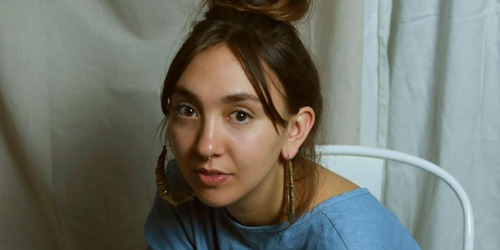
ALICE SKYE.
1. "Of all time" is a huge question! And I made a list to try and help me but it ended up being 20 artists long. But i'm feeling kinda nostalgic so I'll pick the ones I listened to growing up.
Missy Higgins
Uncle Archie Roach
Warumpi Band
Paul Kelly
Powderfinger - there are so many others I want to add!!!
2.
Lost Friends by Middle Kids
Anything released by Kaiit
Milyakburra by Emily Wurramara
Native Tongue by Mojo Juju
Indigenous Land by Drmngnow
3.
Electric Fields at the Brisbane Powerhouse blew my mind!
Seeing Eskimo Joe and Grinspoon at the first Triple J One Night Stand is where I formed my love of 'Aussie rock'.
Regina Spektor in Manchester
Kardajala Kirridara at the Northcote Social Club
Baker Boy at Bigsound 2017
4. I love spending time at home because it's free so highly encourage that.
You could watch TV, we make earrings a lot in my house, or make a shitty painting (what i'm doing right now), or going to the park and having a draw is nice.
5. I'm not good at advice so i'll just give one. Don't be put off by thinking that there are already 1000s of songwriters like you out there just because the music industry is so large and overwhelming. It is scary but you always have your own voice and you never know who will connect to it.
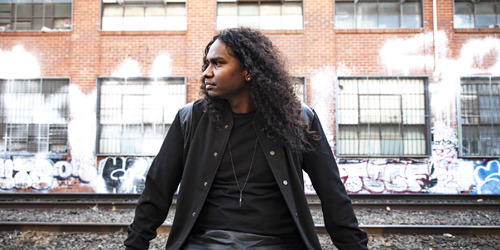
BAKER BOY
1.
Kian
Dallas Woods
Kaiit
Adrian Eagle
Ziggy Ramo
2.
Kait - Live From Her Room
Emily Wurramara - Milyakburra
Drake - Scorpion
Black Panther Soundtrack
The Weeknd - My Dear Melancholy
3.
“No way I can answer this, they all have their own thing..!”
4.
“If I still lived in Arnhem Land I'd be hunting and sitting around the campfire but while I'm here in awesomely cold Melbourne I like to eat oysters and play Fortnite with my crew. Have you seen my Fortnite inspired dance yet? We’re perfecting it for our next trip around the festival circuit...“
5.
“Never treat your mistakes as failure. Nurture and sit with the mistake then move forward and approach your goal differently. Bouncing back is key!”
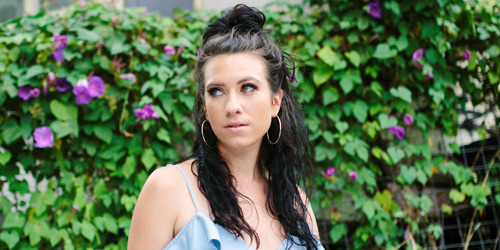
CAITI BAKER
1.
Gurrumul
Ecca Vandal
A.B. Original (Briggs and Trials)
Birdz
2.
Alice Skye - Friends With Feelings
Emily Wurramara - Milyakburra
3.
“Yikes. Ever? James Brown, Prince, Missy Elliott, Jay Z, Alicia Keys… Redman & Method Man… I’m lucky to have seen a lot of incredible live music.“
4.
“If not writing, definitely in nature or chilling, eating and laughing with my squad.“
5.
“Be true to yourself and your art. Be kind. Learn to be adaptive, flexible and make sure you have good people around you.“
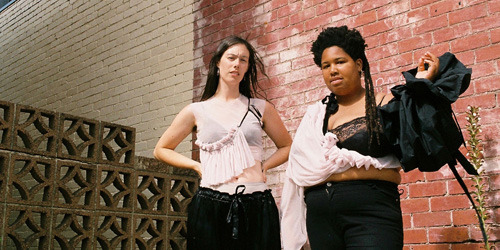
DIVIDE + DISSOLVE
1.
Kalyani & Isha
The Drmng Now
Sasshound
Alice Skye
Kaiit
2.
Kalyani & Isha - That's All I came for
The Drmng Now - Australia Does not exist
Sasshound- Get Up
Alice Skye- Friends with Feelings
Kaiit- Natural Woman
4.
Chilling
Eating
Sleeping
Biking
Smoking
5.
“Pieces of Advice? Please send our way.”
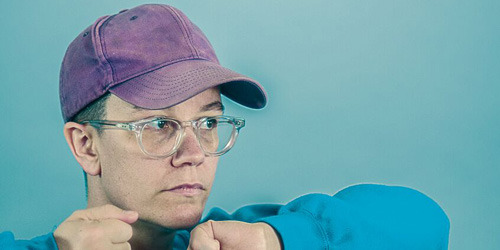
EVELYN IDA MORRIS
1.
Grand Salvo
Extradition
On Diamon (Lisa Salvo)
Gurner
Elizabeth Mitchell
2.
Devotion - Tirzah
Joonya Spirit - Jaala
John Sharp Toro - Native Cats
Her - Totally Mild
The Long Sleep - Jenny Hval
3.
The Ex (from Holland) at The Knitting Factory in NYC ‘04
The Boredoms 10/10/10 (I was playing in it but I know it was the best show ever)
Jaala solo at The Bank
Hot To Rot at the Post Office Hotel
On Diamond at Tom Tom
4.
Playing piano
Watching movies
Hanging out wit my Erik (my partner)
Walking a friend’s dog
Sleeping/cuddling
5.
“Don't let the people who have more power be right about "what is good", don't worry about what folks think, take care of your community first and foremost, take care of your mental health, GET PAID”

FRASER A GORMAN
1.
You Am I
Paul Kelly
Courtney Barnett
Hoodoo Gurus
Midnight Oil
2.
John Prine - The Tree of Forgiveness
Babe Rainbow - Double Rainbow
East Brunswick All Girls Choir - Teddywaddy
Courtney Barnett - Tell Me How You Really Feel
Kevin Morby/Waxahatchee - Farewell Transmission 7”
3.
Band of Horses - Forum, Melbourne
Ryan Adams - Forum, Melbourne
Bill Callahan - Hamer Hall, Melbourne
Nick Cave & The Bad Seeds - Sydney Myer Music Bowl, Melbourne
Gillian Welch - Palais, Melbourne
4.
Drinking beers in the sun
Listening to dylan
Watching Carlton win a game for once
Going to The Tote
Not working
5.
Be nice to yourself and everyone around you
Be nice to support bands cause one day you might want to support them
Party in a respectful manner
Soundcheck is important
Get a pedal tuner for God’s sake
0 notes
Photo

A.B. Original - Foreword (feat. Archie Roach) http://ift.tt/2fwDZrA
0 notes
Text
News & General Chat • Re: Are we treasure hunters or Amateur Archies or what ??
A.B. wrote: ↑
Sun Aug 20, 2017 11:06 pm
If anyone does not like detectorists who sell their finds then please call them something else as it upsets the responsible treasure hunters.
And, by the way, in 23 years of detecting I have never sold a find.
I do. What's the problem for the complainers when one sells some coin, button or buckle that isn't rare, found quiet regular, has non archeological value, from which i have more than one already, but brings me money to drive to that spot were i find that significant rare find to get registered that i would never ever sell?
This hobby costed and costs me enough money so get some part of the fuel or other expences paid once and a while is welcome and i wouldn't decline that.
So i do sell, although selective. And i am not ashamed about it.
Statistics: Posted by amphora — Mon Aug 21, 2017 2:03 pm
News & General Chat • Re: Are we treasure hunters or Amateur Archies or what ?? published first on http://ift.tt/2vLpIR5
0 notes
Text
1. Show the video footage of former Israeli Ambassador to the U.S., Michael Oren, being heckled by pro-Palestinian activists at U.C. Irvine. Ask students: How does this make you feel?
2. Throw a bagel to every person in the room. Ask: In what ways does this bagel represent and embody the Jewish experience and in what ways not? Consider in chevrutah.
3. Give every student $7. Challenge them to donate a dollar a day for one week. Come back a week later and discuss.
4. Read the Bereshit account of Jacob wrestling with the “angel”. Ask students: In what ways has Jewish history embodied or reflected this origin as “wrestlers”?
5. Read the morning prayer, “Elohai HaNeshama”. Ask students: What comes up for you when you read this prayer? What might it mean to say that the soul is “pure”?
6. Give everyone a copy of “Modeh Ani” and have folks recite it upon arising every morning for one week. Come back together and discuss.
7. Watch the Israeli band A-WA’s single “Habib Galbi”. Discuss.
8. Watch a quality version of Bob Marley’s “Exodus”. Ask students: To what extent is this a “Jewish” song – To what extent does it present the tropes and themes of the Jewish story – both historically and spiritually? To what extent not?
9. Study a map of the Land of Israel that includes both major Jewish and Arab population centers as well as clearly delineates the “Green Line”. Ask students if they have any questions.
10. Invite students into a private Facebook group entitled “Gratitude Reflections” and challenge each member of the group to post three “things” they’re grateful for each day.
11. Bring a group of students to a rally or protest. Have them create signs and posters based on values from their Jewish tradition. Following the rally, go get pizza and discuss.
12. Bring a group of Muslim students to meet a group of Jewish students. Have dinner and then have each group generate as many questions as they’d like to ask the other. Come back together and take turns going back and forth, answering as many of the questions as possible.
13. Watch the Curb Your Enthusiasm episode, “Palestinian Chicken”. Ask your students to explain the last scene.
14. Invite Erika Davis (author of the “Black, Gay, and Jewish” blog) to visit a group of students.
15. Purchase every student a copy of Heschel’s “Moral Grandeur and Spiritual Audacity”. Read any essay. Discuss.
16. Find an online description of the Chofetz Chaim’s stringent rules around gossip and Lashon Hara. Ask students what role gossip plays in their lives and if they can understand the rabbi’s stringencies?
17. Host a Tu B’Shvat seder. Download the Hazon “haggadah” for the occasion. Real wine is a must.
18. Pass around a lulav and an etrog. Discuss.
19. At the start or end of a semester, study the midrash of Nachshon ben Aminadav. Ask students in what ways that embodied the chutzpah of Nachshon over the past semester and in what ways they wish they had embodied his chutzpah.
20. Watch the short (30 min.) Israeli movie “Barriers”. Ask students to name ten different types of barriers represented in the movie. Discuss widely.
21. Read the entirety of the Shema. Ask students: How would you relate to the 2nd paragraph if you were a Cambodian sustenance farmer? How would you relate to it if you were “ancient man”? How do you (might you) relate to it as you yourself?
22. Borrow a handful of sets of tefillin and a bunch of tallitot and gather a bunch of students for whom these ritual items are not familiar. Have everyone take turns “wrapping and donning”. Discuss.
23. Gather ten students in an open space for the sunset. Recite the evening “Ma’ariv” prayer. Sit in silence.
24. Look at a collection of hanhagot from various Jewish writers. Have students compose their own hanhagot – based on the language and style of the historical ones.
25. Open up the claf of a mezuzah. Ask students to explain this ritual technology. Have students compose their own mezuzah scroll – give them pushpins to affix these original scrolls to their doorposts.
26. Gather a small group of really intellectually intense students. Purchase each of them a copy of Buber’s “The Way of Man”. Gather on several occasions to read a chapter from this small book.
27. Read the original “10 Commandments” and then read Archie Gottesman’s “New Ten Commandments for the Jewish People”. First discuss. Then have the students compose their own individual ten commandments. Discuss.
28. Cut up a whole lot of little slips of paper. On half of them write, “The entire world was created for me”. On the other half write, “I am nothing but dust and ashes”. Give one of each to 10 students. Ask them to pull out the former when they’re feeling glum and to pull our and read the latter when they’re feeling overly proud. Have them do that for a week. Gather and discuss.
29. On Erev Shabbat, have students go around and fill in the following blanks: This Shabbat I want to unplug from ________. This Shabbat I want to plug into ________.
30. Introduce the Kabbalistic practice of gerushin (wanderings). Take a handful of students and walk aimlessly around campus for an hour trying to get in touch with the exile of the Shekhinah. Discuss.
31. Give a tutorial on various online Israeli and Jewish news culture websites. Let students survey them on their own for a while. Present favorite articles.
32. Read the first chapter of Bereshit – slowly. Discuss as you read.
33. Study Rav Yosef’s statement in the Talmud (Ketubot 48a) that “There must be close bodily contact during sex…” Ask students why Rav Yosef insists on two people being naked? What’s up with nakedness?
34. Study the midrash’s story of Noah planting a vineyard with Satan. Prepare to answer questions about the Jewish Satan. Ask students: What’s this midrash trying to communicate to us about the complexity of getting drunk and being stoned?
35. Get a bunch of siddurim and have students flip through the section of Birkat Nehenin. Tell them they are on a “Brachot Scavenger Hunt”. Can they identify one blessing that is surprising? One that they have recited at some point in the past? One that they find beautiful? Etc.
36. Cut up the weekly parsha verse by verse. Place all the verses in a hat. Pass it around – everyone randomly selects a verse. Have students go a sit alone for 15 minutes reflecting on how the verse speaks to them and “where they’re at” in life. Come back together and share in chevrutah.
37. Study the very first mishnah of Mishnah Berachot.
38. Read A.B. Yehoshua’s critique of diaspora life published in Ha’aretz several years ago. Discuss.
39. Print copies of the summary of “the PEW poll”. Give students 15 minutes to peruse and discuss in small groups. Come back together. Discuss.
40. Give students 30 minutes to answer the question “Why be Jewish?” Answers must be fewer that 50 words. Do the same exercise but require answers to be 20 words or less. Do one more time – 5 words. Then 1 word.
41. Read Matisyahu’s Twitter post (along with accompanying photo) from 12/13/11. Discuss.
42. Gather a group of students. Ask them how we might understand and relate to the idea of angels. Chant “Shalom Aleichem” (as a niggun, without the words) for 15 minutes. Discuss.
43. Print out copies of the Rambam’s enumeration of the 613 commandments. Give students 15 minutes to explore the list. And give them a set of scavenger hunt questions to guide their exploration. A commandment that’s surprising. One they already were familiar with. One they’d like to find the time to perform. One that is morally troubling.
44. Watch the “Double Rainbow” Youtube classic. Pair this with a Heschel text on “wonder”. Discuss.
45. Invite a Jewish LGBT activist to visit with your students.
46. Invite a young Orthodox Jew to meet with your students for a session entitled, “What’s going on in the mind of a young Orthodox Jew?”
47. Sometime around Hannukah, read David Brooks’ piece, “The Hannukah Story,” in the NYTimes from 12/10/09. Discuss.
48. Look at the commandments prohibiting tattoos. Ask students: What right does the Torah have to tell you how to live your life?
49. Place a bacon cheeseburger in the center of a group of students. Discuss.
50. Play Omer Avital’s song, “New Middle East”. Ask students: What does this song mean?
51. Read Allen Ginsberg’s poem, “Jaweh and Allah Battle”. Read it again. Discuss.
52. Have students try and retell the Purim story.
53. Ask students about the personal significance (or lack thereof) of fasting on Yom Kippur.
54. Ask students to make sense of the fact that many Jews who eat cheeseburgers all year long abstain from bread during Pesach.
55. Have students consider Kaplan’s statement: “The ancient authorities are entitled to a vote, but not a veto”. Discuss.
56. Consider the mitzvah of Kibud av v’em / Honor your father and mother. Break students into chevrutot to talk about the depth and possible limitations of this commandment. Have students write letters to their folks.
57. Have students look at the calendar of Jewish months and holidays. Answer questions.
58. Have students read the liturgical text for Amelioration of Bad Dreams. Ask students: What power (of lack thereof) might dreams have in your life? Get into chevrutot and share a dream that has “stuck with you”. Why?
59. Read the Rambam’s “13 Principles of Faith”. Discuss.
60. Bring a Sefer Torah into a room with a group of students. Allow them to hold it and sit with it. Kiss it. Open it up and roll it from start the finish – pointing out unique “typographic” and narrative moments in the text. Answer questions.
61. Bring in falafel – with all the “salatim” fixings. Have a student facilitate a “Felafel Tutorial” demonstrating how to properly stuff a pita.
62. Read the Torah’s narrative about Moses not being permitted to enter the Land of Israel. Ask them to reflect on a time in which they too were not able to make it to a long desired “destination”.
63. Invite a Russian Jewish immigrant to tell his/her story.
64. Ask students if the institution of Bar/Bat Mitzvah should be nixed – or significantly altered. Should it be postponed until the age of 21?
65. Ask students: What does the title “Birthright” mean? Do you have a “Birthright” to the Land of Israel? Discuss.
66. Have students attend Friday night Kabbalat Shabbat davening as “Religious Ethnographers”. Over Shabbat dinner, discuss findings.
67. Watch “Kourtney and Kim Take New York” episode, “True Colors” in which Scott Disick has a mini Jewish awakening. Ask students: What’s going on for Scott? Discuss.
68. Watch Alicia Keys’ music video, “No One”. Ask students: What is this song about? About a relationship between two people? Or about a relationship between a person and God? What evidence in the music video might suggest the latter? Bring in some Kabbalistic poetry. Ask students: What’s the relationship between spirituality and eroticism?
69. Consider several cases of medieval Jewish martyrdom. Ask students: Would you choose death rather than “forsake” your Jewish identity?
70. Find an interesting analysis of “Jewish American Princess”. Have students read it together. Ask students how they feel about this terminology and its function.
71. Have students consider the injunction in Vayikra, “Reprove your neighbor”. Bring in some commentary from interesting sources. Break students into chevrutot and have them think about whom in their lives deserves careful reproach of this sort?
72. Take students to a mikvah. Allow them to immerse (privately) if desired. Discuss.
73. Read the Israeli Declaration of Independence. Discuss.
74. Read George Washington’s “Letter to the Hebrew Congregation at Newport”. Ask students: Do they identify primarily as Jewish Americans or American Jews?
75. Ask students to talk about their “Hebrew Names” – their origins, etc. Lead a discussion about any subject, where students must refer to one another by using their Hebrew names.
76. Have students tell each other their “Jewish stories” by describing a 1) person, 2) experience, and 3) Jewish idea that have had major impacts on their lives.
77. Play a good version of the “Hora” and have students lift each other one by one up in chairs. Discuss.
78. Using their cellphones, have students take portraits of one another with different facial expressions for a variety of Jewish “things” – including, Yom Kippur, Israel, the Shoah, Bnei Mitzvah, etc. Post pictures on Facebook.
79. Have students explore Ritualwell.org. Break students up into groups of 4 and have them design new rituals for “Upon a Hard Break Up”, “Upon Acceptance into College”, and “Upon Leaving Your First Year Dorm room”.
80. Watch an interview with Rabbi Menachem Froman z”l. Ask students: What does Rav Froman mean when he says he lives in ���the state of God”?
81. Ask students: Are Jews white?
82. Watch a collection of recent videos showing police abuse of people of color. Ask students: Considering the injunction in Devarim, “You must not remain indifferent”, what actions have they considered taking to address the injustices that continue to surround race in America?
83. Watch the video of two Israeli police officers beating a Jewish Israeli of Ethiopian decent. Watch videos of the ensuing Ethiopian protests in Tel Aviv. Discuss.
84. Have students turn to one another in chevrutot. Ask them to discuss their relationship with and experience of God.
85. Have students write a list of “10 Contemporary Plagues” that impact our global society. Have them read this list at their family seders.
86. Have students read Rebbe Nachman’s short tale, “The Turkey Prince”. Discuss.
87. Ask students if they’ve received particular “messaging” from parents or grandparents about the need to marry a Jew. Discuss.
88. In a group of students, read selections from Jean Amery’s essay, “On the Necessity and Impossibility of Being a Jew”. Discuss.
89. Ask students: Is it cool to be Jewish? Discuss.
90. Have students interview their oldest living relative about what being Jewish “means to them”. Each student will present.
91. Have students perform a “Welcoming Assessment” for a selection of campus Jewish organizations and institutions. Students present findings.
92. Read “The Epistle of the Baal Shem Tov” with a group of students. Discuss.
93. Instruct students to light a menorah (during Hannukah) in a public space in order to “publicize the miracle”. Come back together and process the experience.
94. Watch the Israeli movie, “Sallah Shabati”. Discuss.
95. Watch “Fiddler on the Roof”. Discuss.
96. Consider how the Torah describes all generations of Jews as having stood at Sinai at the giving of the Torah. Read Merle Feld’s poem, “We all Stood Together”. Ask students to envision what they would have been doing, how they would have been feeling, where they would have been standing – at Sinai.
97. Teach students how to give a “Dvar Torah”. Then give them all various short selections from Torah. They have 10 minutes to develop “Divrei Torah”. Present.
98. Facilitate a “Lechayim Tutorial”.
99. Have students compose their “Jewish Soul Resumes”. Present.
100. Teach students the lyrics of “Hatikva”. Sing together as a group. Discuss.
0 notes
Text
Adelaide ignites during “Mad March”
It’s referred to by locals as “Mad March” (and for good reason) as the City of Churches lurches into a month-long celebration of festivals and events. From rev-heads to music lovers and those who just like an intensive dose of culture, there’s no better place to be.
It all kicks off this week with one of the Southern Hemisphere’s largest arts festivals, the Adelaide Fringe, followed by a weekend of V8 action at the Clipsal 500. Musicians from across the globe will congregate in beautiful Botanic Park for Womadelaide, topped off with the Adelaide Festival which features internationally-acclaimed artists, dancers, playwrights, musicians and authors.
Adelaide Fringe
17 February - 19 March 2017
Set in venues across the Adelaide region, ranging from converted warehouses to pop-up tents, established galleries, pubs and theatres, is the Adelaide Fringe. It offers an eclectic selection of comedy, dance, theatre, music, visual arts and circus events, with its nightlife headquartered at the fantastical “Garden of Unearthly Delights” along East Terrace.
It all kicks off with the Fringe Parade which sees more than 1,500 artists cruise down North Terrace on elaborate floats, while street art and buskers illuminate the streets throughout the month-long event. The Fringe is all about artistic creativity and there’s no shortage of inspiration for those who take the plunge.
Clipsal 500 Adelaide
2-5 March 2017
The first event on the annual V8 Supercar Championship circuit, the Clipsal 500 ignites Adelaide’s East End on the first weekend in March. While the racing is the centre of the action, there’s also family friendly activities, ladies lunches and autograph sessions, together with big name music performances each and every night.
Get up close to all the action with super trucks, stunt bikes and drift demonstrations, or relax on the lawns of the Concert Green where pop-up eateries and bars are set within a shaded grove of trees.
Adelaide Festival
3-19 March 2017
Featuring critically-acclaimed theatre and dance productions, together with big-name musicians and artists, the Adelaide Festival is one of the country’s premier arts events. It is hosted at venues across the city, as well as featuring the sublime Riverbank Palais club where revellers can party into the night along the banks of the River Torrens.
The Adelaide Festival also includes Australia’s oldest and largest literary festival, Adelaide Writers’ Week, which runs from March 4-9 and features interviews with leading authors within the Pioneer Women’s Memorial Garden. It also includes a free Kid’s Weekend where young bookworms can meet their favourite authors and illustrators.
WOMADelaide
10-13 March 2017
Womadelaide is all about world music, with some of the biggest artists from around the globe descending on Botanic Park to the north of the city. The Specials, Bebel Gilberto and Oumou Sangare are among this year’s headliners, together with Australian names such as Archie Roach, D.D. Dumbo and A.B. Original.
Aside from the seven stages, there’s also environmental discussions at The Planet Talks, international cooking demonstrations and instrumental workshops by the artists themselves. Let the young ones run loose in the Kid’s Zone, chill out at the Electrolounge, and shops for global arts and crafts in their market stalls.
But perhaps the best part about Womadelaide is its relaxed vibe, with expansive lawns to kick back on, stages framed by sprawling banyan trees and a plethora of international cuisine to feast on.
Making last minute plans for “Mad March” and wanting somewhere equally inspiring to stay? Check out Ezystayz range of unique accommodation options in Adelaide.
0 notes
Text

Black and Silver Pant Set from A.B. Archie (n/a)
#becky lynch#rebecca quin#black and silver pant set#set#sets#A.B. Archie#women of wrestling fashion#wwe#WWE Raw
11 notes
·
View notes
Text

Becky is wearing a Fringe & Rhinestone Bodysuit by A.B. Archie (n/a) & Butterfly Supreme Holographic Platform Boots from Club Exx (sold out)
#Becky Lynch#Rebecca Quin#Fringe & Rhinestone Bodysuit#bodysuit#bodysuits#A.b. Archie#Butterfly Supreme Holographic Platform Boots#boot#boots#Club Exx#women of wrestling fashion#wwe
13 notes
·
View notes
Text

Charlotte wears a Green Cutout Maxi Dress from A.B. Archie (n/a)
#charlotte flair#ashley fliehr#Green Cutout Maxi Dress#dress#dresses#a.b. archie#women of wrestling fashion#wwe
7 notes
·
View notes
Text

On the cover of her book, Becky wears a Black Cropped Bomber Jacket from A.B. Archie (n/a)
#Becky Lynch#Rebecca Quin#Cropped Bomber Jacket#jacket#jackets#A.B. Archie#Becky Lynch The Man Not Your Average Girl#women of wrestling fashion#wwe
7 notes
·
View notes
Text

Jacket and Pant Set from A.B. Archie (n/a)
#becky lynch#rebecca quin#jacket and pants set#set#sets#red#A.B. Archie#women of wrestling fashion#wwe#WWE Raw
5 notes
·
View notes
Text

Smackdown 9/22/23
Charlotte was styled by King Troi in a Silver Sequin Cutout Jumpsuit from his showroom A.B. Archie (n/a)
The right photo shows a similar jumpsuit sold on Fashion Nova
#Charlotte Flair#ashley fliehr#Silver Sequin Cut Out Jumpsuit#jumpsuit#jumpsuits#A.B. Archie#women of wrestling fashion#wwe#Smackdown
6 notes
·
View notes